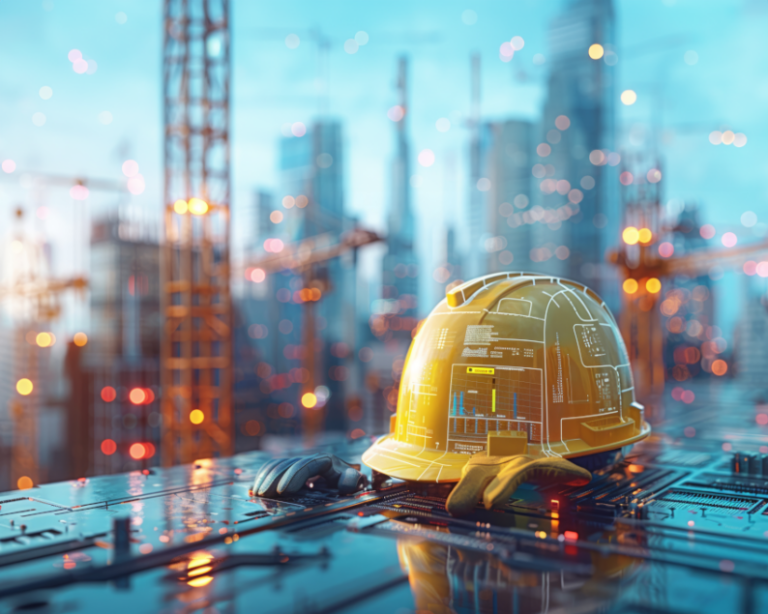
The data show that the AI continues to grow in use among construction companies, a surprise given the historically slow response of the construction industry to the adoption of new technologies. In the midst of the pressure to adopt, smaller players do not need to panic: the adoption of the AI is not as complicated as it may seem.
AI is the current issue, forcing all industries to reassess their own focus on technology. Oh, we are told, it is transformative and powerful, capable of threatening jobs and building new future; The key, however, is to find out how to unlock their capacity.
From the outside, the response of how to use the IA in the construction would seem obvious: the AI could design a project or to help in modeling and projections. In a demanding field like construction, however, there is little margin by mistake. A single calculation or erroneous error could undo an entire construction. Therefore, for technology that is not yet fully understood or reviewed, it can be difficult for construction companies to renounce control. AI continues to be amazing answers; It is still a black box even among those who develop it.
The average construction firm will not feel comfortable to become the responsibility of the AI, especially not when the margins are so thin. The construction market is still in a state of compression. Benefit margins are minimal right now, which makes every half point a company can reduce its even more critical offer to win projects.
The expense needed to provide a new technology for many companies simply does not exist right now, much less for such a complex and not proven as AI.
The lack of capital and the concerns about AI safety are all the preventive layers at the top of the entrance point for most construction companies, creating nervousness and anxiety for leadership in many players smaller. How are they supposed to compete for projects, now or in the future, when the companies of billions of dollars devote resources to finding out how to optimize the IA in their work processes?
It has become a modern adage: your job will not be taken by IA, but someone will use alas. For AEC companies, you will not lose the next candidacy for the AI, but you may do so in a company that uses Alas.
Smaller companies cannot compete in the field of new technology, but it is not a dynamic that the construction industry do not know. Unlike many white -necked industries, where the most agile and less risk -avenue startups can often gain higher hand by large companies by adopting new technologies, the construction industry often allows larger companies to be the first adoptors. The transition from CAD to BIM, for example, has been a slow progress, but has been led by larger companies that have time, skills and margins to adopt.
Their decisions are reduced through industry, creating clearer paths for smaller companies to understand how and why behind new systems. Ai will probably be the same; World and national companies can try new uses and systems, while smaller regional and local companies sit down, waiting for signals that are safe before continuing. This does not mean that younger players should do not It moves. Unlike other specific technologies of construction, the AI changes the functioning and interaction in a modern workplace. Instead of treating the AI as the next BIM or ERP, construction companies should address the AI as the next smartphone or the messaging system: technologies that improve work efficiency without dramatically changing places work of what has been done.
The simple uses of the AI that can be performed on basic and basic generative platforms (for example, the Chatgpts and the co -pilots of the world should be adopted in the AEC workforce. These systems can do things like reading and digestion of the digestion Contract language, allowing team members to understand more fully what they register and the deadlines that agree.
It is a low -risk and low -risk -use use for a company to remain attractive for young contracts.
This is not the complex uses of the AI, but they can generate a level of familiarity with the technology that allows to adopt more perfection with larger and more complex uses. It is like understanding the logic and structure of most telephone applications; If you have never used it before, the adoption of one is much harder. But if you have used an app, even if it is only for a basic purpose, using the following application is much easier.
As AI will continue to grow and adapt to the construction company, which may be a basic review of today’s contracts, it can be a first review of the design schemes tomorrow. An email draft can soon become a programming system and soon companies will be able to save a huge amount of time and money in Backend and Administrative Tasks.
Regardless of the size, construction companies should move towards the AI as a tool that can improve the processes that already take place in their company. The adoption of the AI does not need to bring new costs or new talents to a team; Instead, the use of AI at a smaller and lower risk AI can provide the training ground that guarantees success in the future. Companies may not be left behind today, but the use of AI will give companies tomorrow.
Carl Oliveri is the leader of the practice of construction and a member of Grassi and advises the owners of the construction on modeling and financial strategy.

